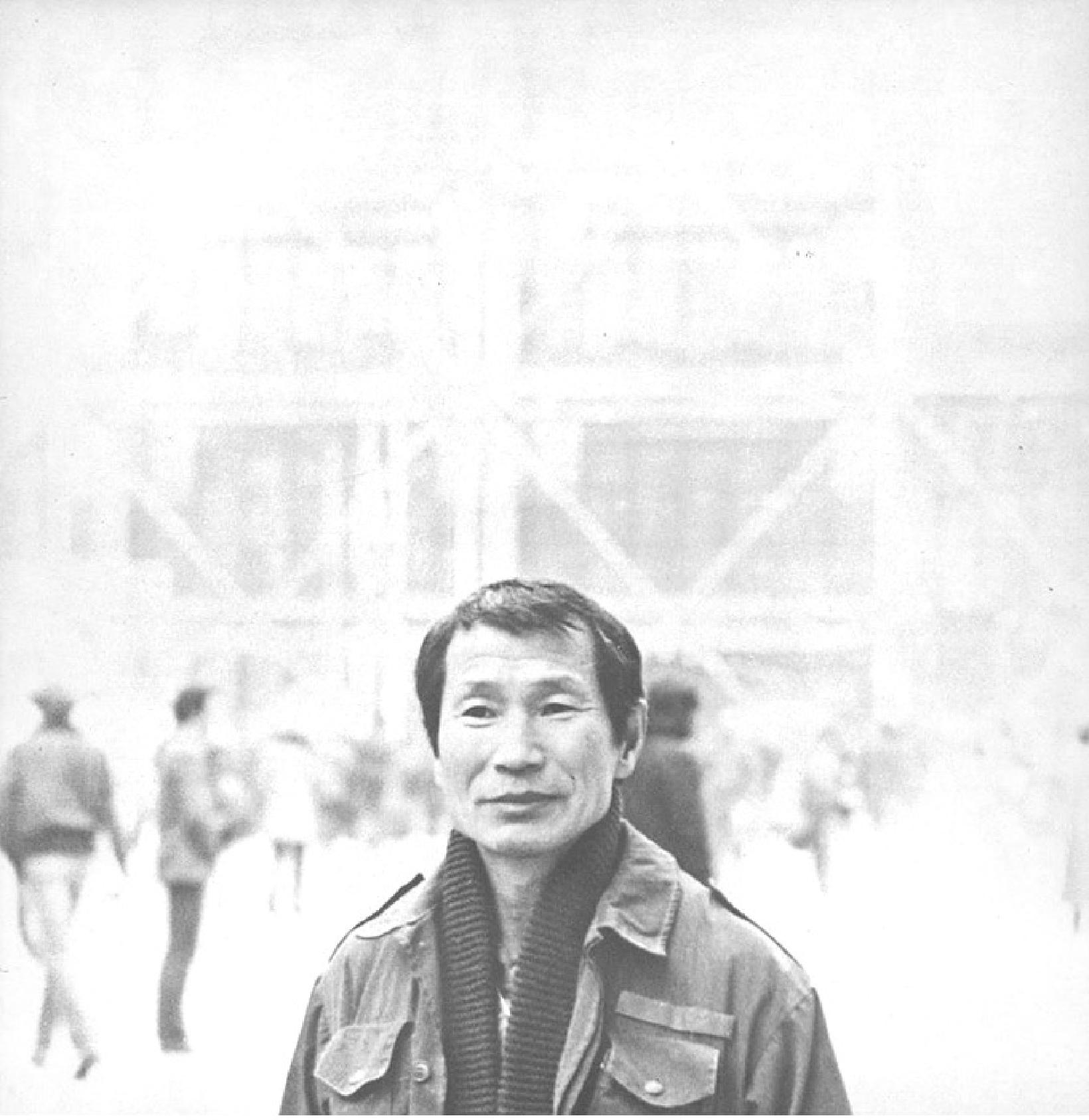Kwon Young-Woo’s (1926-2013) career spanned over six decades and he remains one of Korea’s most influential artist of the 20th century. Coming of age at a time in Korean history where artists sought to create works distinct from the styles taught under Japanese colonial rule, Kwon’s practice was instrumental in furthering these developments almost independently from any established artist groups. Kwon is most widely known for his works exploring the materiality of paper and ink and was an early practitioner of what would later become known as the Dansaekhwa movement.
Kwon created autonomous structures utilizing layers of hanji (traditional Korean mulberry paper) that he glued to the surface and then altered by tearing and scratching the surface with his fingers. For some, he would experiment with various layers of papers to create abstract grids and mountainous forms while in others he would puncture holes with instruments. He also experimented with the properties of ink allowing the ink to spread itself as it interacted with the paper and surface. In this way, the process and focus on materiality resulted in affiliation with the loose community of artists in the Dansaekhwa movement. While this focus on paper formed the basis of his artistic language his use of ink in a way devoid of traditional expression pushed the artist concerns of his generation.
Kwon completed his undergraduate and graduate studies at Seoul National University and was a professor at Chung-Ang University before moving to Paris and the back to Seoul. Kwon was honored with the 1998 Korean Artist of the Year Award and in 2001 awarded the Silver Crown Medal of the Order of Cultural Merit.
His works are in the permanent collection of the British Museum, Leeum Samsung Museum of Art, M+ Hong Kong, and the National Museum of Modern and Contemporary Art, Korea.
권영우(1926-2013)는 서울대학교 미술대학에서 동양화를 전공하였고 이후 동대학원에서 석사 학위를 받았다. 1964년부터 1978년까지 중앙대학교 예술대학 교수로 부임한 후 1978년에서 1989년까지 프랑스 파리에서 체류하며 작품 활동에 전념하였다.
‘바닷가의 환상(1958년)’, 과 ‘섬으로 가는 길(1959)’등의 대표작들이 대한민국미술전람회에서 문교부 장관상을 수상했다. 이 시기 권영우의 작품은 초현실적이면서도 간결한 먹선으로 추상성을 보여준다. 1960년대 이후부터 백색의 한지를 적극적으로 작품에 이용하기 시작하는데, 이를 통해 그만의 추상적인 작업인 ‘무제’시리즈를 시작했다. 파리에 체류하던 시절 그는 한지에 과슈와 먹을 혼용하여 색채를 가미하기도 했다. 1990년 귀국 후에는 다시 백색의 한지 작업으로 돌아와 다양한 일상 용품 오브제들을 한지와 접목시키는 작업을 선보였다. 권영우는 종이의 질감 자체를 조형 언어의 기본으로 삼으며 끊임없는 변화를 추구하였다.
대표 전시 이력으로는 1965년 제 8회 도쿄비엔날레, 1973년 제 12회 상파울루 비엔날레, 1975년 동경화랑 《한국 5인의 작가, 다섯 가지의 흰색》전, 1976년 파리 자크마솔 화랑 개인전, 1988년 88 서울올림픽기념 세계현대미술제, 1990년 호암미술관 회고전, 2015년 제 56회 베니스 비엔날레 연계 《단색화》전, 2016년 브뤼셀 보고시안 재단에서 열린 《과정이 형태가 될 때: 단색화와 한국 추상미술》 등이 있다. 대표작이라고 할 수 있는 두 작품, ‘바닷가의 환상(1958년)’, 과 ‘섬으로 가는 길(1959)’ 은 대한민국미술전람회에서 문교부 장관상을 수상했다. 1998년 대한민국 예술원상을 수상, 2001년에는 은관 문화 훈장을 수여 받았다. 주요 소장처로는 국립현대미술관, 서울시립미술관, 삼성미술관 리움, 런던 대영박물관 등 유수의 기관 및 미술관 등이 있다. 작가는 2013년 서울에서 작고하였다.
